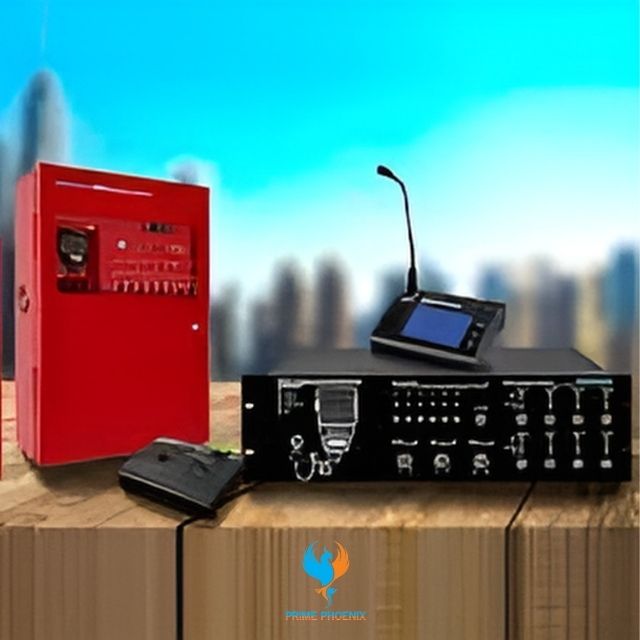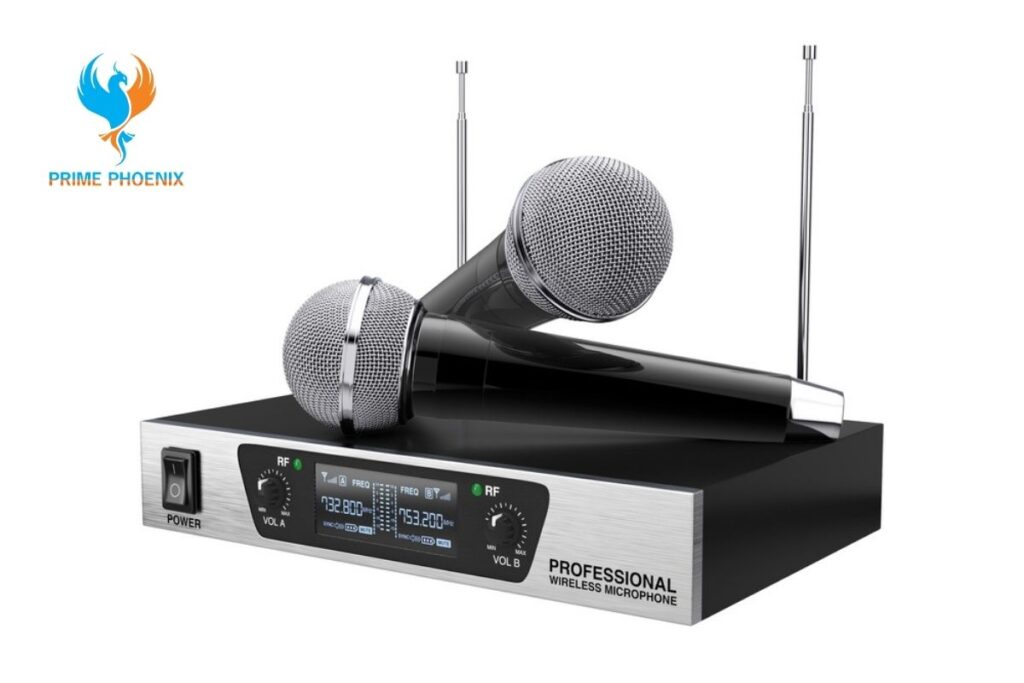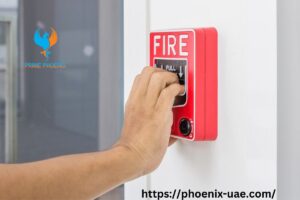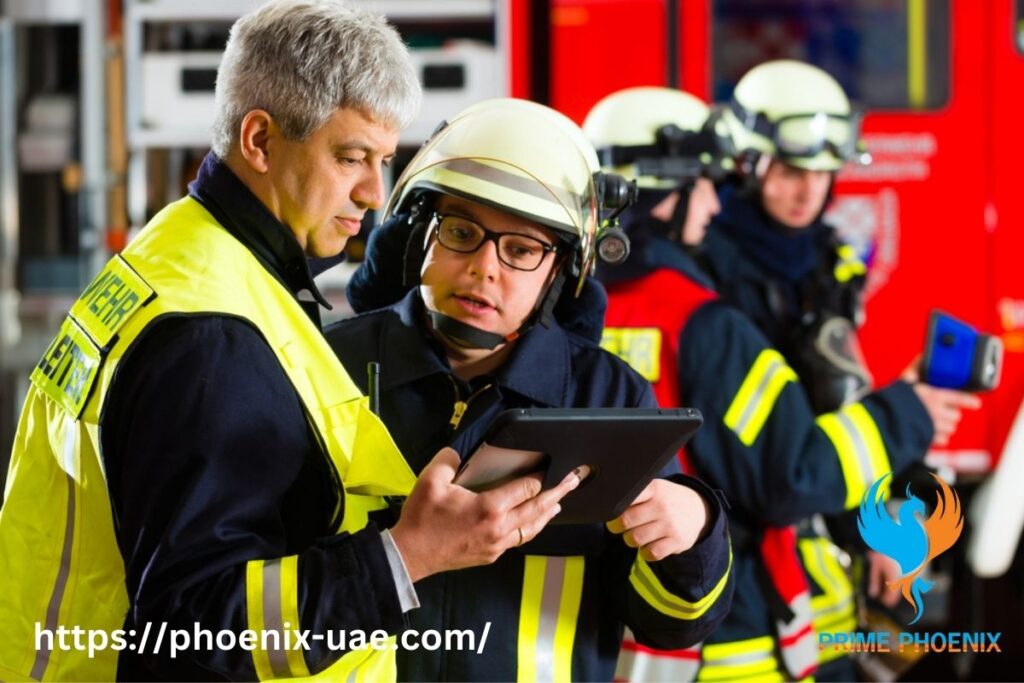- Ras Al Khor Industrial Area 2
- +971 4 330 2170
- +971 547919584
The primary purpose of fire alarms is to safeguard human life. The loud noises alert individuals to impending danger and instruct them to flee immediately. However conventional fire alarms only use sound and visual cues. This idea is expanded upon by voice evacuation systems, which incorporate spoken directions. More information makes it easier for people to remain composed and know what to do in an emergency.
Everything you need to know about voice evacuation technology will be covered in this post. You’ll discover how it functions and its benefits. The primary advantages, design factors, installation expenses, and maintenance needs will also be covered.

A Voice Evacuation System: What Is It?
Clear, understandable voice notifications combined with fire alarm functions make up a voice evacuation system. Specialized audio components in the system provide instructions in real time and clarify the issue.
A prerecorded message warns the building of danger when smoke or fire is detected. After that, the system provides instructions, including assembly locations and approved escape routes. This lessens uncertainty and fear.
There are many benefits to voice evacuation over standard tone-only fire alarms. The main advantage is improved communication among occupants, which facilitates quicker, more efficient evacuations.

Benefits of Voice Evacuation Technology
Compared to generic alarms, voice evacuation systems deliver clearer, more meaningful alerts. This enhances public safety in numerous ways:
- Reduced confusion and panic: Tone-only alarms can create ambiguity, whereas voice notifications provide direct instructions. This prevents misunderstandings and limits chaotic behavior.
- Faster evacuations: Voice alerts convey the necessary actions, enabling occupants to respond appropriately. This improves evacuation efficiency.
- Increased occupant safety: Voice notifications lead to more orderly evacuations, reducing crowd crushes, injuries and trampling.
- Better accessibility: Voice messages are easier for young children, the elderly and those with disabilities to understand, facilitating safe egress.
- Multilingual capabilities: Many systems support prerecorded messages in multiple languages to accommodate diverse occupancies.
- Zoned notifications: Advanced systems can provide instructions specific to different building areas, directing occupants along optimal evacuation routes.
- Enhanced emergency response: Voice notifications provide first responders with a better understanding of the situation upon arrival.
Considerations of Voice Evacuation System Designing
Proper voice evacuation system design requires strategic thinking and technical expertise. Various factors must be considered during planning, such as:
- Building size and occupancy usage
- Zoning with clear, intelligible voice audio
- Prefabricated versus customized message content
- Electrical load and wiring requirements
- Integration with existing fire protections systems
- Placement of audio components (speakers, microphones, etc.)
- Backup battery power supply
- Testing protocols and maintenance needs
Qualified fire protection engineers conduct extensive occupancy planning, code consulting, risk analysis and system modeling to create a tailored voice evacuation design.
Voice Evacuation System Pricing
Voice evacuation system prices vary based on several key factors:
- Building size: More speakers and complex zoning increase hardware expenses.
- Customization: Prefabricated messages minimize costs versus tailor-made content.
- Audio quality: High-intelligibility speaker systems are more expensive.
- Integration: Interfacing with other building systems adds complexity.
- Installation: Labor expenses depend on building layout and construction access.
- Additional features: Backup batteries, redundant power, multilingual messages, and advanced configurations raise costs.
Economies of scale also influence pricing. Systems for large venues cost over $200,000. A small system may be $10,000 or less. Med-range systems cost from $50,000 to $150,000. Maintenance adds recurring expenses.
While voice evacuation demands a higher initial investment, enhanced occupant communication and safety provide long-term value.
How Voice Evacuation Systems Integrate with Existing Fire Protection Systems?
- Fire Alarm System Integration – Voice evacuation systems connect directly to the main fire alarm control panel. When smoke, heat or flame is detected, the fire alarm system triggers the appropriate voice evacuation notifications.
- Smoke Control System Coordination – Voice notifications can be synchronized with smoke control systems. For example, telling occupants to remain in their rooms while smoke compartments are being pressurized.
- Automatic Sprinkler System Monitoring – Voice systems receive input from the sprinkler system control valve, signaling when water is flowing and which areas are affected. Messages can then provide strategic directions.
- Fire Pump Monitoring – The voice system can obtain status updates on fire pump operation. This allows announcements indicating pump failures and alternative instructions.
- Emergency Communications Systems – Integration with other emergency comms like firefighter telephone systems and area of rescue assistance systems improves communications.
- Mass Notification Systems – Voice evacuation can be layered with mass notification to provide additional flexibility for non-fire emergencies. Central monitoring stations coordinate priority.
- Building Automation Systems – Voice systems may interface with BAS to automatically control egress routes, contain smoke, and operate life safety equipment.
- Emergency Power Systems – Uninterruptible power systems supply backup electricity, while generators provide extended runtime. This prevents voice notification blackouts.
Proper interface design and electrical coordination ensures all these systems work in tandem for streamlined emergency response. Qualified engineers program intelligent priority and routing logic to optimize this critical synergy.

Voice Evacuation Maintenance Requirements
Like any life safety system, voice evacuation requires ongoing inspection, testing and upkeep. Strict compliance with fire codes and system manufacturer guidelines ensures reliability.
Typical maintenance activities include:
- Testing audio functionality on a regular schedule
- Replacing backup batteries annually
- Updating message content as occupancy usage evolves
- Monitoring wiring for defects or damage
- Cleaning dust and debris from speakers
- Checking amplifiers and processing hardware
- Fixing any detected problems immediately
- Keeping detailed maintenance logs
- Evaluating intelligibility and audio quality
- Recalibrating equipment as needed
Annual inspections by a qualified contractor are recommended. Some local codes also mandate periodic testing by authorities having jurisdiction.
Partnering with an experienced fire protection provider simplifies maintenance. Many offer ongoing service contracts to proactively manage voice evacuation systems.

Benefits of Partnering with an Experienced Fire Protection Provider
Expertise and Familiarity – Fire protection specialists have in-depth knowledge of voice evacuation system components, configurations, and maintenance needs. Their experience streamlines testing protocols, troubleshooting, and repairs.
- Compliance Management – Reputable providers stay current on fire codes and standards, ensuring your system maintenance meets all requirements. They can also liaise with authorities having jurisdiction as needed.
- Proactive Preventative Care – Fire protection partners conduct routine inspections and servicing to detect issues before they become major problems. This prevents unexpected system failures.
- Simplified Logistics – Partnering with one provider to handle all your maintenance needs is more efficient than coordinating with various vendors. This saves time and headaches.
- Priority Emergency Response – Dedicated maintenance contracts give you priority access to emergency repair services in the event of system malfunction. Fast response times limit downtime.
- Ongoing System Optimization – Providers identify opportunities to fine-tune and update equipment configurations over time as needs evolve. This improves audio quality and intelligibility.
- Warranty Access – Manufacturers often require consistent inspection logs and certified maintenance to preserve warranties. Partners ensure compliance.
- Cost Savings – Preventative maintenance is cheaper than reactive repairs. Contracts also lock in fixed rates. Both factors generate long-term savings.
The right fire protection partner becomes an invaluable extension of your team, providing the expertise and diligence needed to keep voice evacuation systems performing optimally 24/7. This provides invaluable peace of mind.

The Importance of Voice Evacuation Solutions
Voice evacuation represents a major leap forward for fire detection technology. The systems deliver fast, intelligible notifications that facilitate orderly evacuations. Although more advanced than traditional alarms, the premise remains elegantly simple – to protect human life.
This technology provides an added layer of communication that benefits all occupants. As urbanization increases high-rise and complex building designs, emergency voice evacuation systems are more valuable than ever.
Prime Phoenix brings decades of fire protection expertise to voice notification projects. Our licensed engineers adeptly handle large, multi-use facilities. Custom messaging and specialized designs ensure optimal intelligibility and seamless integration. Contact us today to discuss voice evacuation or any of your fire safety needs.
